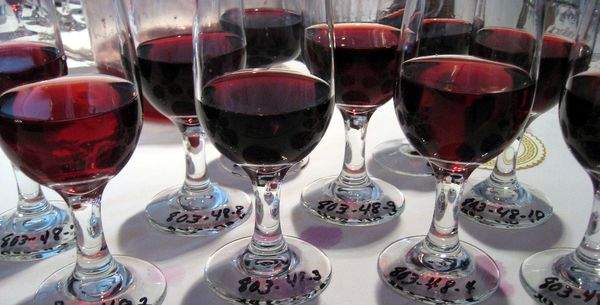By Evan Dawson, Finger Lakes Editor and Lenn Thompson, Founder and Editor-in-Chief
This year it's different. See, every year we write about the New York Wine & Food Classic and the results on this blog. It's important because it's the largest competition that focuses only on the wines of New York State.
This blog is the best source for information on those wines. We have to write about "the Classic."
But that doesn't mean it's not frustrating to see how it's organized and run. In fact, it is frustrating to watch from afar because we are so passionately interested in New York wines and feel so strongly about their quality and potential.
This year's post is going to be a bit different from those written in the past. Yes, we think that the judges "got it wrong" in more than a few cases, but the judges are all highly qualified and they tasted what they tasted. There's little reason or justification to argue the individual medals for individual wines.
In fact, we think that the judges got it right in at least two hugely important cases. Anthony Road Wine Company and Sheldrake Point Vineyard are two quality-focused producers deserving of the Governor's Cup (for the best overall wine) and "Winery of the Year" respectively.
Rather than focus on the wine-by-wine results, we're going to humbly ask that the Classic's organizers make a few changes to improve the competition. Significantly.
Change #1: Generate More Interest by Holding the Competition in New York City — Every Year
Right now, the Classic moves around the state from year to year, but should it? Long Island is beautiful and Canandaigua is too, but to maximize exposure and buzz around the event, is there any better place than New York City?
Conduct it in Manhattan and more people are going to pay attention — more press, more retail outlets, more restaurants and more consumers.
This would also remove any real or imagined "home turf" bias.
There are few places in the world with more qualified judges and media access.
Do it in New York City. Every year.
Change #2: Highlight the Best Wines by Naming them "Best Of" — Regardless of Production
Because the competition is organized by the New York Wine & Grape Foundation, an organization that exists to promote New York wines, it only makes sense that the competition would have an overt marketing angle. But that angle should never get in the way of highlighting the state's best wines.
Case in point — Shinn Estate Vineyards 2006 Ultra Brut Sparkling wine was awarded Double Gold, but only 70 cases were made. Because of that low production "…there wasn't a 'best of (sparkling wine) category' this year because not enough people can buy it," according to Jim Trezise, President of the NYWGF.
So, it was found to be the best sparkling wine by a panel of qualified judges, but it wasn't awarded "Best of" status.
This seems simple. If it was the best sparkling wine in the competition, it should be named the "Best Sparkling Wine." Yes, we want people to have access to highly rated wines, but the best should be deemed the best, period.
And we doubt there will be many years when the Governor's Cup goes to a wine with 25 cases produced.
Change #3: Improve the Perception of New York Wines by Revisiting the Number and Focus of the Categories
Once again, this seems to come down to marketing.
Why else would there be a category for "Best Native Blush"? Or "Best Traminette"? A "Best Of" award is a nice promotional vehicle, but having so many obscure categories is damaging to the wider cause of convincing the wine world that New York produces serious and, occasionally, world-class wines.
This is not to say that hybrids and natives should be ignored. Both have earned their significant place in the New York wine landscape. But it makes much more sense to curb the number of individual categories afforded to them, and the easiest way is to simply go with "Best White Hybrid," "Best Red Hybrid," and "Best Native." The native reds tend to be sweeter, like the whites, so it's fair to judge them together.
As important as natives and hybrids have been in New York's wine history, the state has grown well beyond its focus on those grapes. The event should mature with the region.
Then there are some categories that need to be added. This year, due to a mixup, there wasn't a "Best Pinot Noir" winner announced (that was later rectified and awarded to Heart & Hands Wine Company). Pinot needs to be in the mix every year, as Blaufrankisch (or Lemberger, whatever you want to call it) and sparkling wine.
So there it is, the LENNDEVOURS/New York Cork Report three-step plan to address some core issues with the New York Food & Wine Classic. What do you think?
We'd love to have an honest discussion here on the site. Tell us we're right. Tell us we're wrong. Tell us what you'd do to improve the competition.

